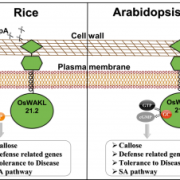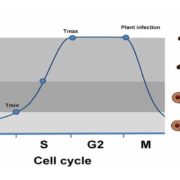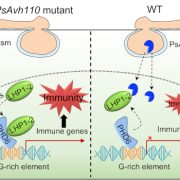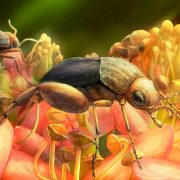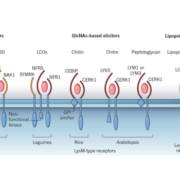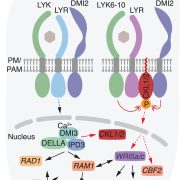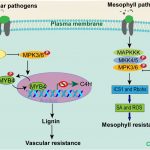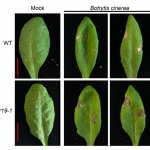Serendipity: Story of breeding dual resistance (Nature Comms)
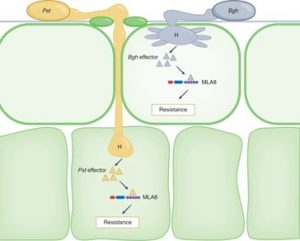 How would you feel if you developed a plant that is tolerant to a particular stress stimulus and found out that it can also tolerate another stress? Bettgenhaeuser and found that this happened when plant breeders developed barley varieties resistant to the powdery mildew disease (caused by the fungal pathogen B. graminis f. sp. hordei; Bgh) and at the same time introduced resistance to wheat stripe rust, caused by a different fungal pathogen. The genetic locus Mildew locus a (Mla) has considerable allelic diversity, and some alleles confer resistance to Bgh. Bettgenhaeuser and colleagues showed that the resistance in domesticated barley towards wheat stripe rust (caused by Puccinia striiformis f. sp. tritici; Pst) is under the control of three quantitative trait loci, designated Rps6, Rps7 and Rps8, and that Rps7 is the major component of resistance in their investigation. Their analysis further showed that the Rps7 and Mla loci are linked, and specifically the Mla8 gene is responsible for conferring resistance to both powdery mildew and stem rust. In an accompanying News and Views, Saur and colleagues provide an excellent illustration to summarise this dual resistance. The MLA8 immune receptor recognizes the Bgh effector AVRA8 to initiate plant defence response, whereas the effectors produced by Pst are currently unknown. (Summary by Sibaji K Sanyal @SibajiSanyal) Nature Comms. 10.1038/s41467-021-27288-3 and 10.1038/s41477-022-01097-y
How would you feel if you developed a plant that is tolerant to a particular stress stimulus and found out that it can also tolerate another stress? Bettgenhaeuser and found that this happened when plant breeders developed barley varieties resistant to the powdery mildew disease (caused by the fungal pathogen B. graminis f. sp. hordei; Bgh) and at the same time introduced resistance to wheat stripe rust, caused by a different fungal pathogen. The genetic locus Mildew locus a (Mla) has considerable allelic diversity, and some alleles confer resistance to Bgh. Bettgenhaeuser and colleagues showed that the resistance in domesticated barley towards wheat stripe rust (caused by Puccinia striiformis f. sp. tritici; Pst) is under the control of three quantitative trait loci, designated Rps6, Rps7 and Rps8, and that Rps7 is the major component of resistance in their investigation. Their analysis further showed that the Rps7 and Mla loci are linked, and specifically the Mla8 gene is responsible for conferring resistance to both powdery mildew and stem rust. In an accompanying News and Views, Saur and colleagues provide an excellent illustration to summarise this dual resistance. The MLA8 immune receptor recognizes the Bgh effector AVRA8 to initiate plant defence response, whereas the effectors produced by Pst are currently unknown. (Summary by Sibaji K Sanyal @SibajiSanyal) Nature Comms. 10.1038/s41467-021-27288-3 and 10.1038/s41477-022-01097-y


